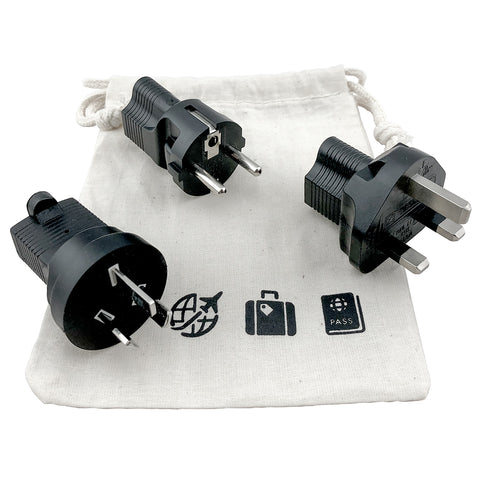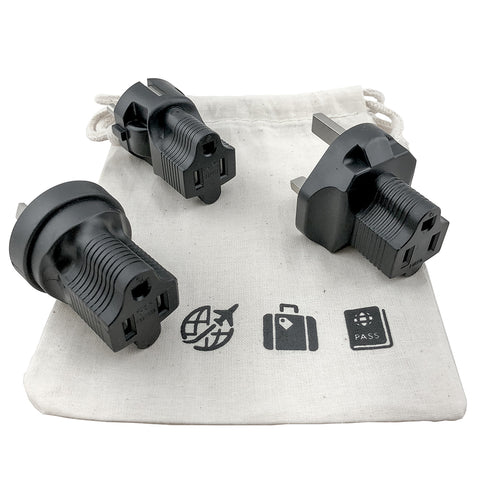SOOW Cable Power Cord Wires
Many materials may be used to make power cords with SOOW cable as long as it is a thermoset material that complies with the various industry standards.
SOOW wire has become the single most popular power cord wire style used for high power (up to 600V) North America power cord applications.
What does “SOOW” mean?
As defined by the NEC (National Electrical Code NFPA 70) and referred to in a variety of UL specifications including UL 817, UL 62 and UL 1581, SOOW simply means:
- S: Service use rated up to 600 volts (note: if a J appears in the standard, the wire is only rated up to 300 volts as is SJT wire).
- O: The first “O” refers to the rating of outer jacket material and means that it is rated to resist exposure to oil.
- The second “O” refers to the rating of the inner conductor’s insulation and means it is rated to resist exposure to oil as well.
- Weather or water resistant.
What are the various thermoset and thermoplastic materials?
Thermoset Materials:
- NBR or NBR + PVC: Nitrile Butadiene Rubber or Nitrile Butadiene and Polyvinyl Chloride
- CPE: Chlorinated Polyethylene
- EPM or EPDM: Ethylene Propylene
- XLP or XLPE: Crosslink Polyethylene
- CSPE or CP: Chlorosulfonated Polyethylene
Thermoplastic Materials:
- PVC: Polyvinyl Chloride
- PE: Polyethylene
- TPE: Thermoplastic Elastomer
- PU: Polyurethane
What are the differences between these materials?
The below chart compares thermoset and thermoplastic materials:
| Wire Property | Thermoset | Thermoplastic |
|---|---|---|
| Wire Property | Thermoset | Thermoplastic |
| Flexibility | + (more flexible) | - (less flexible) |
| Weight | - (heavier) | + (lighter) |
| Heat Resistance | + (more resistance) | - (less resistance) |
| Price | -(more expensive) | + (less expensive) |
| Cut and Tear Resistance | + (more resistance) | - (less resistance) |
| Abrasion Resistance | + (more resistance) | - (less resistance) |
| Impact Resistance | + (more resistance) | - (less resistance) |
| Deformability | + (more resistance) | - (less resistance) |
| Ability to Glide | - (more glide resistance) | + (less glide resistance) |
| Cold Resistance | = | = |
| Flame Retardant | = | = |
| Oil and Acid Retardant | = | = |
| Chemical Resistant | = | = |
| Water Resistant | = | = |
| Ozone and Sun Resistant | = | = |
| Aging | = | = |
What material does SIGNAL+POWER use and why?
SIGNAL+POWER has specifically selected the use of a blend of NBR and PVC to produce our SOOW bulk cable because it offer the absolute best value for all of the above properties, especially durability, flexibility, weight and price. We offer the best of thermoset and thermoplastic properties.
What applications can use SOOW cable?
SOOW is so popular because it is suitable for so many applications including, but not limited to, industrial equipment, data center equipment, heavy duty tools, battery chargers, household appliances, outdoor power extensions, lighting installations, motor leads, mining equipment, marine equipment, welding machines, fire alarm and temperature control systems, sound equipment, power stations, bus bar drops and heavy duty machinery.
What Industry Standards does S+P SOOW bulk cable comply with?
- UL: UL 62, UL 817, UL1581, UL 498
- CSA: CSA C22.2 NO 49-06
- RoHS2 and RoHS
- REACH (latest version which covers 132 substances)
- OSHA acceptable
- ASTM: American Society for Testing and Materials spec ASTM B3 – 12 and B – 174
- MSHA: Mine Safety and Health Administration P-136-MSHA Flame Test
S+P recommends SOOW style power cord wire whenever ≤ 600V is required and most indoor/outdoor harsh environment applications.
S+P offers SOOW cable wire in 3, 4 and 5 conductor varieties and in 4, 6, 8, 10 and 12AWG wire thicknesses.






